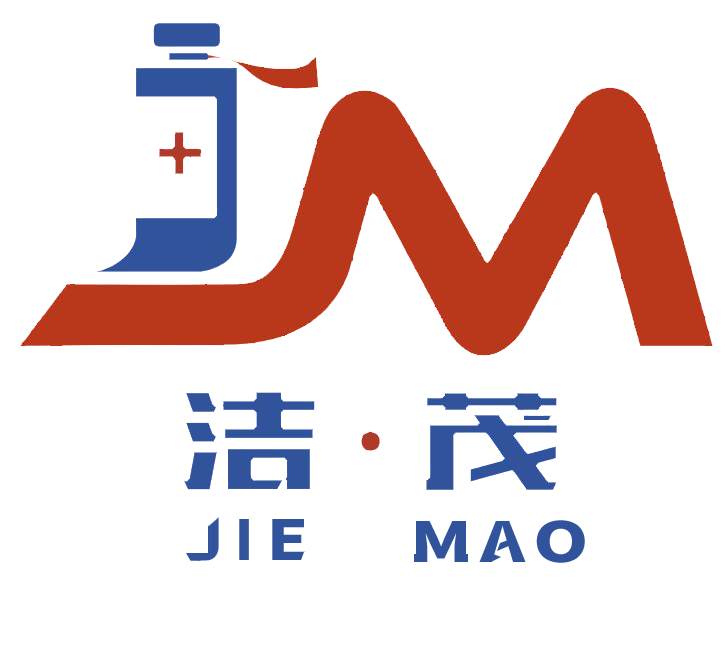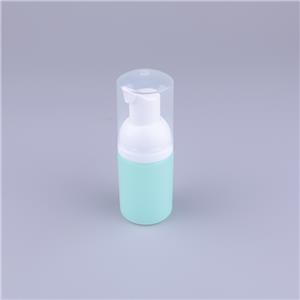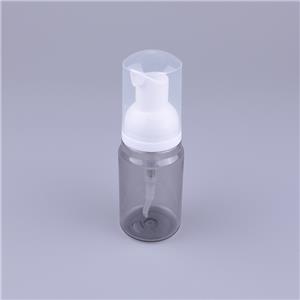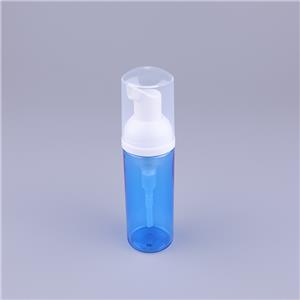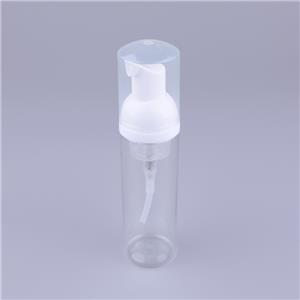- Home
- >
- News
- >
- Public Information
- >
- Transparency of Plastic Raw Materials: From Molecular Mechanisms to Application Practice
Transparency of Plastic Raw Materials: From Molecular Mechanisms to Application Practice
The transparency of plastic raw materials is the core indicator for measuring their optical performance, which refers to the ability of light to pass through the material and directly affects the visual effect and functional implementation of the product. From everyday mineral water bottles to high-end optical lenses, from mobile phone screens to car headlights, transparency is a key parameter in material selection. A deep understanding of the essence, influencing factors, and control methods of transparency is of great guiding significance for the design and production of optical plastic products.
1、 Basic Concepts and Evaluation System of Transmittance
The transparency of plastics is not a single numerical value, but a comprehensive indicator that covers multiple optical parameters, reflecting the transmission characteristics of materials for different wavelengths of light.
Core evaluation indicators
The industry quantifies transparency through the following parameters:
Transmittance (T): The ratio of the luminous flux transmitted through a material to the incident luminous flux, expressed as a percentage. The transmittance of general transparent plastics is mostly between 80% and 90%, such as PET which has a transmittance of about 88%; High performance optical plastics can reach over 90%, such as PMMA (organic glass) reaching 92% and PC (polycarbonate) reaching 89% -90%.
Haze: The proportion of scattered light in the total transmitted light that passes through a material, reflecting the degree of turbidity of the transparent material. High quality optical plastics typically have a haze of less than 1%, while ordinary transparent plastics have a haze of 1% -3%. If it exceeds 5%, it will appear visibly cloudy.
Refractive index (n): The ratio of the propagation speed of light in a vacuum to its propagation speed in a material, which affects the refraction and reflection of light rays. PMMA has a refractive index of 1.49, PC has a refractive index of 1.58, and high refractive index plastics (such as CR-39) can reach 1.50-1.60, making them suitable for making lenses.
Dispersion coefficient (Abbe number, ν): measures the difference in refraction of light of different wavelengths by a material. A high Abbe number results in low dispersion. PMMA has an Abbe number of 57, PC has 30, and optical glass has an Abbe number of about 50-60, so high-precision optical components still require glass material.
These indicators need to be considered together: for example, the light transmittance of PC is slightly lower than PMMA, but its impact resistance is much better than the latter, making it the preferred choice for car lampshades; PMMA, due to its lower haze, is more suitable for display panels that require high clarity.
Light Transmittance Principle and Molecular Mechanism
The process of light passing through plastic involves three functions: absorption, reflection, and scattering
Absorption: Chromogenic groups (such as double bonds and carbonyls) in molecules absorb light of specific wavelengths, resulting in a decrease in transmittance. Pure PE has low absorption of visible light due to the absence of chromophores in its molecular chain, but scattering is caused by its high crystallinity, resulting in a transmittance of only 50% -60%; However, amorphous PMMA has extremely low absorption due to the absence of crystalline regions and symmetrical molecular structure.
Reflection: Light is reflected at the air plastic interface due to the difference in refractive index, with a single interface reflectivity of about 4% -5% (such as the reflection loss of PMMA in air). By coating (such as anti reflective film), the reflectivity can be reduced to below 1%.
Scattering: The uneven structure inside the material (such as crystalline particles, bubbles, impurities) causes the direction of light to change, which is the main cause of haze. Crystalline plastics (such as PET) have a higher scattering index than amorphous plastics (such as PC) due to the difference in refractive index between the crystalline and amorphous regions.
Amorphous plastics, due to their disordered molecular arrangement and lack of obvious differences between crystalline and amorphous regions, have less scattering and usually have better transparency than crystalline plastics. For example, amorphous PS has a transmittance of 88%, while crystalline HDPE only has a transmittance of 50% -60%.
2、 Key factors affecting the transparency of plastics
The transparency of plastics is determined by their molecular structure, aggregation state structure, and processing technology, and can be significantly improved through precise control of optical properties.
The core role of molecular structure
Molecular structure is the fundamental determinant of transparency:
Molecular symmetry: structurally symmetrical molecules (such as methyl methacrylate units in PMMA) are tightly arranged, have high electron transition energy, and absorb less visible light. PC with a benzene ring in its molecular chain has a slight absorption of blue light due to its π - electron system, and its transmittance is slightly lower than PMMA.
Polar groups: Groups with strong polarity, such as amide and ester groups, can cause uneven intermolecular forces, leading to local density fluctuations and increased scattering. PA6 forms hydrogen bonds due to amide groups, with high crystallinity and a light transmittance of only 60% -70%, much lower than non-polar PMMA.
Molecular weight and distribution: Excessive molecular weight can lead to intensified entanglement of molecular chains, affecting uniformity; Narrow molecular weight distribution helps reduce density fluctuations and lower haze. The molecular weight distribution of optical grade PMMA is usually controlled within 2.0, while that of ordinary grade reaches 3.0-4.0.
Impurities and additives: Catalyst residues, unreacted monomers, or colorants can introduce chromophores, reducing light transmittance. For example, PVC contains chlorine atoms and is prone to decomposition during processing, producing HCl. Its light transmittance is only 70% -80%, and it turns yellow over time; And optical grade PC requires strict control of catalyst residue (<1ppm).
The influence of aggregated state structure
Crystallinity: The difference in refractive index between the crystalline and amorphous regions in crystalline plastics leads to strong scattering, and the higher the crystallinity, the lower the transmittance. For example:
Amorphous PC (crystallinity 0) with a transmittance of 89% and a haze of 0.5%;
Semi crystalline PET (crystallinity 30% -40%) has a transmittance of 88%, but a haze of 3% -5%;
High crystalline PP (crystallinity 70%) has a light transmittance of only 50% -60% and a haze>10%.
By rapid cooling (such as rapid cooling during injection molding), crystallinity can be reduced and light transmittance can be improved. For example, BOPET film can achieve a light transmittance of 88% and a haze of<2% through biaxial stretching to control crystallization.
Phase separation and dispersion: During blending or filling modification, the difference in refractive index between the dispersed phase (such as rubber particles, fibers) and the matrix can lead to scattering. For example, ABS has a light transmittance of only 60% -70% due to the presence of rubber particles; By matching the refractive index, the transmittance of PC/PMMA alloy can reach over 85%.
Internal stress: The internal stress generated during the processing can lead to uneven orientation of molecular chains, causing density fluctuations and increasing scattering. If the internal stress of PC products is too high, the haze will increase from 0.5% to 2% -3%. Annealing treatment (120 ℃ insulation for 2 hours) can eliminate some of the stress and reduce the haze to below 1%.
The regulatory role of processing technology
Melting temperature and time: Low temperature leads to uneven plasticization and the formation of crystal points; If it is too high, it will cause thermal degradation and produce chromophores such as carbonyl groups. The optimal processing temperature for PMMA is 220-240 ℃. If it exceeds 260 ℃, it will cause yellowing due to degradation, and the transmittance will decrease by 5% -10%.
Mold temperature: Mold temperature affects the crystallization rate and uniformity. When PET injection molding, the mold temperature increases from 20 ℃ to 80 ℃, the crystallinity increases from 5% to 20%, and the transmittance decreases by 10%. However, crystallization can be suppressed by rapidly cooling the mold (temperature<20 ℃), and the transmittance remains above 85%.
Impurity control: Dust and metal particles in the raw materials will become scattering centers. Optical grade plastics need to be filtered with a precision of 10 μ m, and the molding environment needs to achieve Class 1000 cleanliness (particles per cubic foot ≥ 0.5 μ m<1000).
Surface quality: An increase in surface roughness can lead to interface scattering. For example, the surface roughness of PMMA sheet increases from 0.1 μ m to 1 μ m, the transmittance decreases from 92% to 85%, and the haze increases from 0.5% to 5%. Polishing (such as flame polishing) can reduce roughness to below 0.01 μ m and restore optical performance.
3、 Main transparent plastic raw materials and optical properties
Due to structural differences, the optical properties of different transparent plastics exhibit significant differentiation, forming a product system covering different application scenarios.
Universal transparent plastic
Polymethyl methacrylate (PMMA): commonly known as organic glass, amorphous structure, light transmittance of 92%, haze<1%, is the most transparent universal plastic. Refractive index 1.49, Abbe number 57, low dispersion, suitable for making lenses and display stands. But the impact resistance is poor (notch impact strength 2-3kJ/m ²), and the surface is easily scratched (pencil hardness 2H). By blending with butadiene (such as MBS modification), the impact strength can be improved to 5-8kJ/m ².
Polycarbonate (PC): amorphous structure, light transmittance of 89% -90%, haze of 0.5% -1%, excellent impact resistance (notch impact strength of 60-80 kJ/m ²), is the most balanced variety of comprehensive performance among transparent plastics. Refractive index 1.58, Abbe number 30, large dispersion, suitable for making car lampshades, bulletproof glass, and baby bottles. Better weather resistance than PMMA, with a light transmittance retention rate of>85% after 2 years of outdoor use.
Polyethylene terephthalate (PET): a semi crystalline plastic with controlled crystallinity through biaxially oriented stretching (BOPET). It has a light transmittance of 88%, haze<2%, good chemical resistance, and a temperature resistance of 120 ℃. Mainly used for beverage bottles and packaging films, it can be made into amorphous materials through copolymerization modification (such as PETG), with a light transmittance increased to 90%, suitable for thick walled products.
Polystyrene (PS): General grade GPPS has a light transmittance of 88%, haze of 1% -2%, low cost (about 60% of PMMA), but high brittleness (impact strength of 2-3kJ/m ²), and temperature resistance of only 60-80 ℃. Used for disposable water bottles and toy shells, high impact grade HIPS reduces light transmittance to 70% -80% due to the presence of rubber phase.
Polyvinyl chloride (PVC): Transparent grade soft PVC has a light transmittance of 80% -85% and a haze of 3% -5%. Due to the presence of plasticizers, it is easy to migrate and the light transmittance decreases after long-term use; Hard PVC has a light transmittance of 75% -80% and good weather resistance. It is used for door and window profiles and infusion tubes, but strict control of heat stabilizers (such as organotin) is required during processing to avoid affecting optical performance.
High performance optical plastics
Cycloolefin copolymer (COC/COP): amorphous polyolefin, transmittance 91% -93%, haze<0.1%, refractive index 1.52-1.54, Abbe number 55-60, close to optical glass. Excellent chemical resistance, temperature resistance of 120-170 ℃, suitable for making optical lenses, optical disc substrates, medical testing vessels, and is a core material in the high-end optical field.
Poly (4-methylpentene-1) (TPX): Crystallinity of 30% -40%, but due to the small difference in refractive index between the crystalline and amorphous regions, the transmittance reaches 90%, and the haze is less than 2%. It is the only transparent polyolefin plastic. With a density of only 0.83g/cm ³, it is the lightest among all transparent plastics and has a temperature resistance of 160 ℃. It is used for microwave tableware and high-temperature windows.
Polysulfone (PSU/PES): amorphous structure, light transmittance of 80% -85%, haze<2%, temperature resistance of 150-180 ℃, good hydrolysis resistance. Used for medical equipment windows and high-temperature lighting fixtures, although the light transmittance is not as high as PMMA, it can be used for a long time in humid and hot environments.
Polyetherimide (PEI): Amber transparent, with a light transmittance of 80%, a temperature resistance of over 200 ℃, and a flame retardant rating of UL94 V0. It is used for aerospace transparent components and high-temperature lighting fixtures, and is the preferred transparent plastic in extreme environments.
4、 Testing methods and standards for transparency
Accurate measurement of plastic transmittance requires adherence to standardized methods, and different standards have slightly different requirements for testing conditions. The results should be interpreted in conjunction with the application scenario.
Transmittance and haze testing
According to ISO 13468 and ASTM D1003 standards, the core parameters include:
Light source: CIE standard light source D65 (simulating sunlight) or A (incandescent lamp) is used, and D65 is usually used for transparent plastics.
Sample thickness: The standard thickness is 3mm. Increasing the thickness will result in a decrease in transmittance due to absorption and scattering accumulation (such as PMMA thickness increasing from 1mm to 10mm, transmittance decreasing from 92% to 85%).
Testing instrument: The haze meter measures the total transmitted light and scattered light (scattering angle>2.5 °) through an integrating sphere, calculates the transmittance (T=total transmitted light/incident light) and haze (Haze=scattered light/total transmitted light).
Testing precautions: The sample should be flat and free of scratches. Surface oil stains can cause increased scattering and need to be cleaned with alcohol; Crystalline plastics need to be labeled with molding conditions (such as cooling rate), as differences in crystallinity can cause fluctuations in test results.
Refractive Index and Dispersion Testing
Refractive Index: Using an Abbe refractometer, the critical angle is measured and calculated. The test temperature is controlled at 25 ± 0.5 ℃. The refractive index varies at different wavelengths (such as 589nm sodium yellow light) and should be clearly labeled.
Abbe number: measures the refractive index of a material at three specific wavelengths (486nm, 589nm, 656nm), calculated according to the formula (ν=(nD-1)/(nF-nC)), reflecting the degree of dispersion.
These parameters are crucial for optical design, such as accurately matching the refractive index and Abbe number of each lens in lens design to eliminate chromatic aberration.
Weather resistance and transmittance retention test
Evaluate the optical stability of materials during long-term use:
QUV aging test: Simulate ultraviolet light and condensation cycles, regularly measure changes in transmittance and haze. After 1000 hours of QUV aging, the transmittance retention rate of PMMA is about 85%, PC is about 90%, and COC can reach over 95%.
Thermal aging test: Place in an oven at 100-150 ℃ for 1000 hours to test the changes in optical performance. After aging at 120 ℃, PC is prone to yellowing, with a 5% -10% decrease in transmittance, while COP remains almost unchanged.
5、 Application adaptation and optimization strategies for transparency
In practical applications, it is necessary to select suitable transparent plastics based on product functional requirements and optimize transparency through technical means.
Transparency requirements and material selection in different fields
In the packaging field, emphasis is placed on low cost and transparency. PET (88% transparency) is used for beverage bottles, PMMA (92%) or PC (89%) is used for cosmetic bottles, and PP (transparent grade, 70% -80%) is used for food preservation boxes.
Optical lenses: High transmittance and low dispersion are required. CR-39 (92% transmittance, Abbe number 58) or PC (impact resistant, suitable for sports glasses) are used for eyeglass lenses, while COC/COP (92% transmittance, low dispersion) is used for camera lenses.
In the automotive field, the headlight cover needs to be impact resistant and weather resistant, and PC (89% light transmittance, hardened and scratch resistant) should be selected; The dashboard cover should have high clarity and be made of PMMA or PC/PMMA alloy.
Electronic display: The phone screen cover is made of chemically strengthened glass (with a light transmittance of 91%), but some low-end models use PMMA+hardened film; The display light guide plate is made of PMMA (high transparency, high haze of 20% -30%, uniform light guide).
Medical field: The infusion set window requires chemical stability, using PVC (80%) or PC (89%); The detection colorimetric dish requires high-precision light transmission, using PS or COP (with a light transmission rate of over 90% and no absorption).
Technical means to enhance transparency
Raw material purification: Remove catalyst residues (such as titanium catalyst in PC), unreacted monomers (MMA monomer content<0.1% in PMMA), and reduce absorption sources.
Crystallization control: Rapid cooling (such as PET injection mold temperature<20 ℃) or addition of nucleating agents (such as sorbitol nucleating agents for transparent PP) is used for crystalline plastics to refine grain size to below visible light wavelength (<0.5 μ m) and reduce scattering.
Blending modification: Reducing phase separation scattering through refractive index matching, such as PC/PMMA alloy (PC refractive index 1.58, PMMA1.49, The proportion needs to be precisely controlled, and the transmittance can reach over 85%.
Surface treatment: Coating with anti reflective film (such as MgF ₂ thin film) to reduce interface reflection and increase transmittance by 2% -3%; Hardened coatings (such as SiO ₂) enhance wear resistance while reducing surface scattering.
Processing optimization: using precision injection molding (with stable holding pressure) to reduce internal stress; Melt filtration (10 μ m filter) to remove impurities; Clean workshop molding (Class 1000) to avoid dust pollution.
Typical Failure Cases and Solutions
PC lampshade yellowing: Long term outdoor use causes molecular chain oxidation due to ultraviolet radiation, resulting in a decrease in transmittance from 89% to 70%. Solution: Add UV absorbers (such as UV-5411) or apply anti UV coatings on the surface to extend the service life to more than 5 years.
The haze of PMMA display rack increases: due to the uneven orientation of molecular chains caused by internal stress during processing, stress release during use leads to scattering. Solution: After forming, annealing treatment (80 ℃ insulation for 2 hours) is carried out to eliminate more than 90% of internal stress.
Insufficient transmittance of PET bottles: high crystallinity (>40%) leads to increased scattering. Solution: Optimize the blow molding process, increase the cooling rate (such as increasing the cooling air volume), and control the crystallinity within 20% -30%.
The transparency of plastic raw materials is the result of the combined action of molecular design, processing technology, and application requirements. There is no "absolutely optimal" transparent material, only the choice of "scene adaptation". With the advancement of optical modification technology, the performance boundaries of transparent plastics are constantly breaking through. For example, PC doped with quantum dots can achieve high transparency and color gamut expansion simultaneously, replacing traditional materials in the display field. In the future, transparent plastics will continue to make efforts in lightweight, impact resistance, and functional integration, further expanding the possibilities of optical applications.
